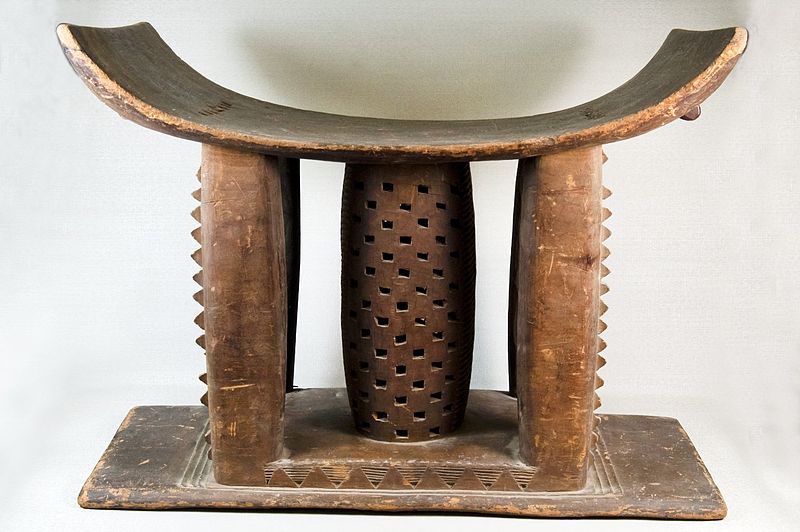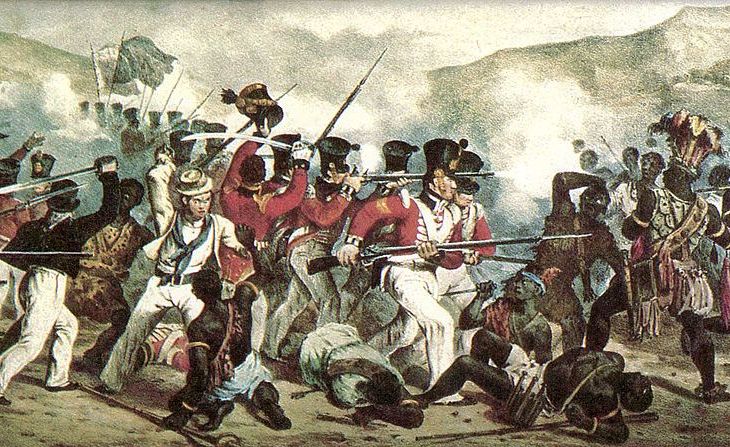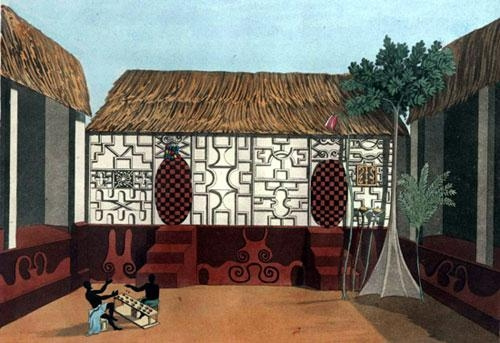The Ashanti Empire

In the 17th century, on the smooth downs of Ghana, the Ashanti Empire came into being. The rulers were known for their gold and their advanced statecraft. They were feared for their sophisticated, modern warfare. How did the Ashanti managed to becoming a major power within one century?
The Akan People in Search of a new Land

In the 13th century, the Akan people immigrated from the North into the rainforest areas of West Africa. At that time, they were small ethnic communities, looking for good fortune in the fertile regions in the centre of Ghana. It was in those grounds that they found immeasurable treasures of gold. They began trading with the powerful Sahelian empires. In the 15th century, as a result of millet, bananas and cassava being imported from America to Southeast Asia, more and more people moved to the area called Asantes. There was plenty of food, and there was enough work in the gold mines. Soon, European traders showed interest in the precious metal.
Gold Trade with Europe

The Portuguese were the first to begin trading with gold on the coast. The Ashanti’s reputation about their wealth aroused the greed of the remaining European powers. Dutchmen, Brandenburgians and Britons fought for the control over the gold coast. They drove the Portuguese away and arranged the trade among one another. With those three powers, trade began to change. Weapons and munitions were exchanged for gold. Soon, the Ashanti supplied gold all across Europe and received modern fire weapons in exchange. Nevertheless, they did not sell all of it. A part of it was hoarded as a treasure. The village communities achieved great wealth. Small princedoms began to develop. With the new weapons they were superior to neighbouring communities. They conducted regional wars and forced the prisoners to work in their gold mines.
Osei Tutu and the golden Chair

1695 marked the birth of the Ashanti Empire. A priest declared to have received the mission from their highest god Nyame to make the Ashanti to a powerful nation. Osei Tutu, the ruler of Kumasi at that time, appointed a convention of all dignitaries. According to legend, the priest supposedly got a golden chair from heaven right in front of the eyes of the gathered. He declared this chair sacred as it contained the soul of the entire Ashanti people. Osei Tutu united the princedoms to a kingdom and acceded the throne as Asanthene, the king of the Ashanti people. The golden chair became his kingdom’s symbol. But Osei Tutu had more in mind. He wanted his empire to become the most powerful in West Africa. He created a national army. Every member state was assigned a position and task in this army. Every state had to contribute weapons and men. The associated forces conquered the surrounding empires and integrated them.
The End of the Empire and the Beginning of Colonisation

The Ashanti people stepped into slave trade. In exchange for gold, slaves and ivory they received the latest weapons. As a result, the Ashanti became so powerful that the British colonial power needed seventy years and seven wars to defeat them. The Ashanti king was sent into exile. For a century, Ghana turned into a British crown colony. The Britons forbid slave trading and exploited the Ashanti’s gold treasures. They discovered a new source of income by growing cocoa. Ghana’s people fought back in many bloody uprisings against the exploitation of their treasures and their manpower. On March 6th, 1957, as the first colony in Africa, they gained independence from the British colonial rule.
A King without a Kingdom

The Ashanti Empire existed for over 200 years; from 1695 to 1896. Today, the Ashanti are a nation among nations in Ghana. Their palaces were destroyed by the colonial powers. But they still have their king. Ten village temples are preserved. UNESCO declared them World Cultural Heritage, an honour for the high Ashanti culture. In the picture on the right you can see Asanthene Prempeh I., the last king of the Ashanti.
The Sankofa Bird
The Ashanti owned a variety of symbols and sayings. They date back to the time of the old kingdom. A very famous symbol is the Sankofa bird. The bird paces forward, yet has his head backward looking. It symbolizes learning from the past in order to create a better future.

